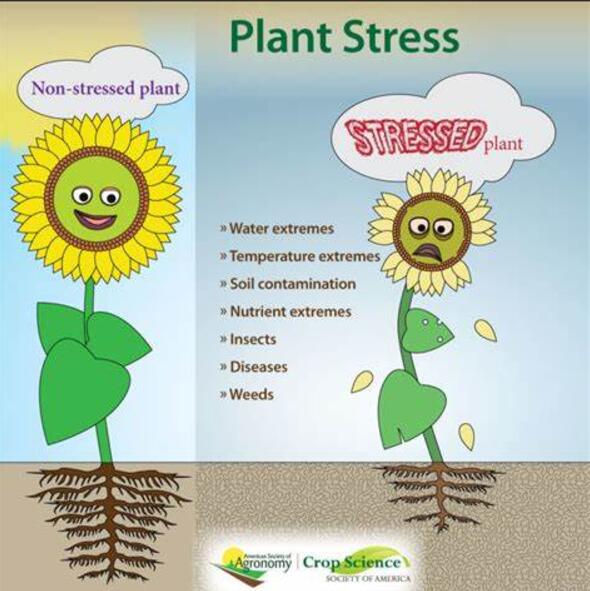不同谷粒苋栽培品种对重金属胁迫反应的比较分析
IF 6.8
Q1 PLANT SCIENCES
引用次数: 0
摘要
植物萃取是对受重金属(HMs)污染的土壤进行植物修复的最有前途和最有效的策略。本研究旨在确定斯洛伐克两种谷粒苋栽培品种 Pribina(Amaranthus cruentus)和 Zobor(Amaranthus hypochondriacus × Amaranthus hybridus)与商业栽培品种 Plainsman(A. hypochondriacus × A. hybridus)的植物萃取潜力。水培实验用 200 mg l-1 Pb(NO3)2、150 mg l-1 ZnCl2 和 300 mg l-1 MnCl2 处理 14 天。结果表明,所有栽培品种对接触 HMs 的反应不同。根据形态分析,cv.Pribina 和 cv.Zobor 对 HM 的耐受性更高,尤其是对锰的耐受性。通过组织化学染色法确定了锌离子在处理过的植物根部组织中的位置。生化分析表明,Zobor 和 Plainsman 作物的脂质过氧化反应更明显,而 Zobor 作物的脂质过氧化反应更严重。而 Pribina 品种的愈创木酚过氧化物酶活性则有所增加。而 Pribina 品种的愈创木酚过氧化物酶活性有所增加。光合色素大多不受 HM 处理的影响。所有栽培品种的基因表达都发生了显著变化,尤其是与胁迫相关的基因 AhDGR2 和 Ah24。HMs 从根部向嫩芽的转移效率不高,不足以将谷粒苋视为超积累植物,但可以推测每个受检栽培品种都具有很强的植物稳定潜力。本文章由计算机程序翻译,如有差异,请以英文原文为准。
A comparative analysis of heavy metal stress responses in different grain amaranth cultivars
Phytoextraction belongs to the most promising and effective strategies for phytoremediation of soils contaminated with heavy metals (HMs). The aim of this study was to determine the phytoextraction potential of two Slovak grain amaranth cultivars Pribina (Amaranthus cruentus) and Zobor (Amaranthus hypochondriacus × Amaranthus hybridus) compared to a commercial cultivar Plainsman (A. hypochondriacus × A. hybridus). Hydroponic experiment was set up for 14 days of treatment with 200 mg l-1 Pb(NO3)2, 150 mg l-1 ZnCl2, and 300 mg l-1 MnCl2. The results showed that all cultivars reacted differently to HMs exposure. Based on the morphological analyses, cv. Pribina and cv. Zobor showed a higher level of HM tolerance, especially to manganese. Location of zinc ions was performed by histochemical staining in roots tissues of treated plants. Biochemical analyses showed that lipid peroxidation was more pronounced in cv. Zobor and Plainsman, while guaiacol peroxidase activity was increased in cv. Pribina. Photosynthetic pigments remained mostly unaffected by HM treatment. Significant changes in gene expression were detected in all cultivars, especially for stress-related genes AhDGR2 and Ah24. Translocation of HMs from roots to shoots was not efficient enough to consider grain amaranth as a hyperaccumulator, but a strong phytostabilization potential is presumed for each examined cultivar.
求助全文
通过发布文献求助,成功后即可免费获取论文全文。
去求助
来源期刊

Plant Stress
PLANT SCIENCES-
CiteScore
5.20
自引率
8.00%
发文量
76
审稿时长
63 days
期刊介绍:
The journal Plant Stress deals with plant (or other photoautotrophs, such as algae, cyanobacteria and lichens) responses to abiotic and biotic stress factors that can result in limited growth and productivity. Such responses can be analyzed and described at a physiological, biochemical and molecular level. Experimental approaches/technologies aiming to improve growth and productivity with a potential for downstream validation under stress conditions will also be considered. Both fundamental and applied research manuscripts are welcome, provided that clear mechanistic hypotheses are made and descriptive approaches are avoided. In addition, high-quality review articles will also be considered, provided they follow a critical approach and stimulate thought for future research avenues.
Plant Stress welcomes high-quality manuscripts related (but not limited) to interactions between plants and:
Lack of water (drought) and excess (flooding),
Salinity stress,
Elevated temperature and/or low temperature (chilling and freezing),
Hypoxia and/or anoxia,
Mineral nutrient excess and/or deficiency,
Heavy metals and/or metalloids,
Plant priming (chemical, biological, physiological, nanomaterial, biostimulant) approaches for improved stress protection,
Viral, phytoplasma, bacterial and fungal plant-pathogen interactions.
The journal welcomes basic and applied research articles, as well as review articles and short communications. All submitted manuscripts will be subject to a thorough peer-reviewing process.
 求助内容:
求助内容: 应助结果提醒方式:
应助结果提醒方式:


